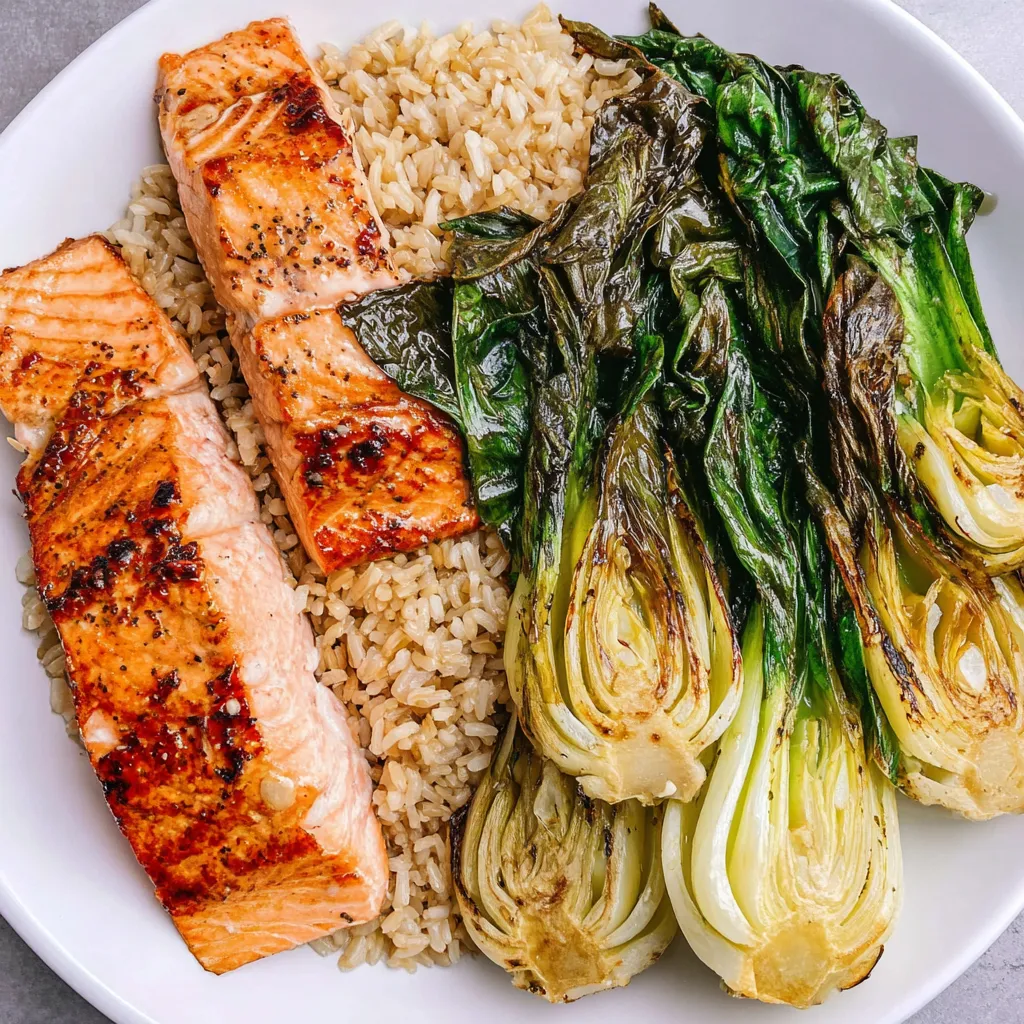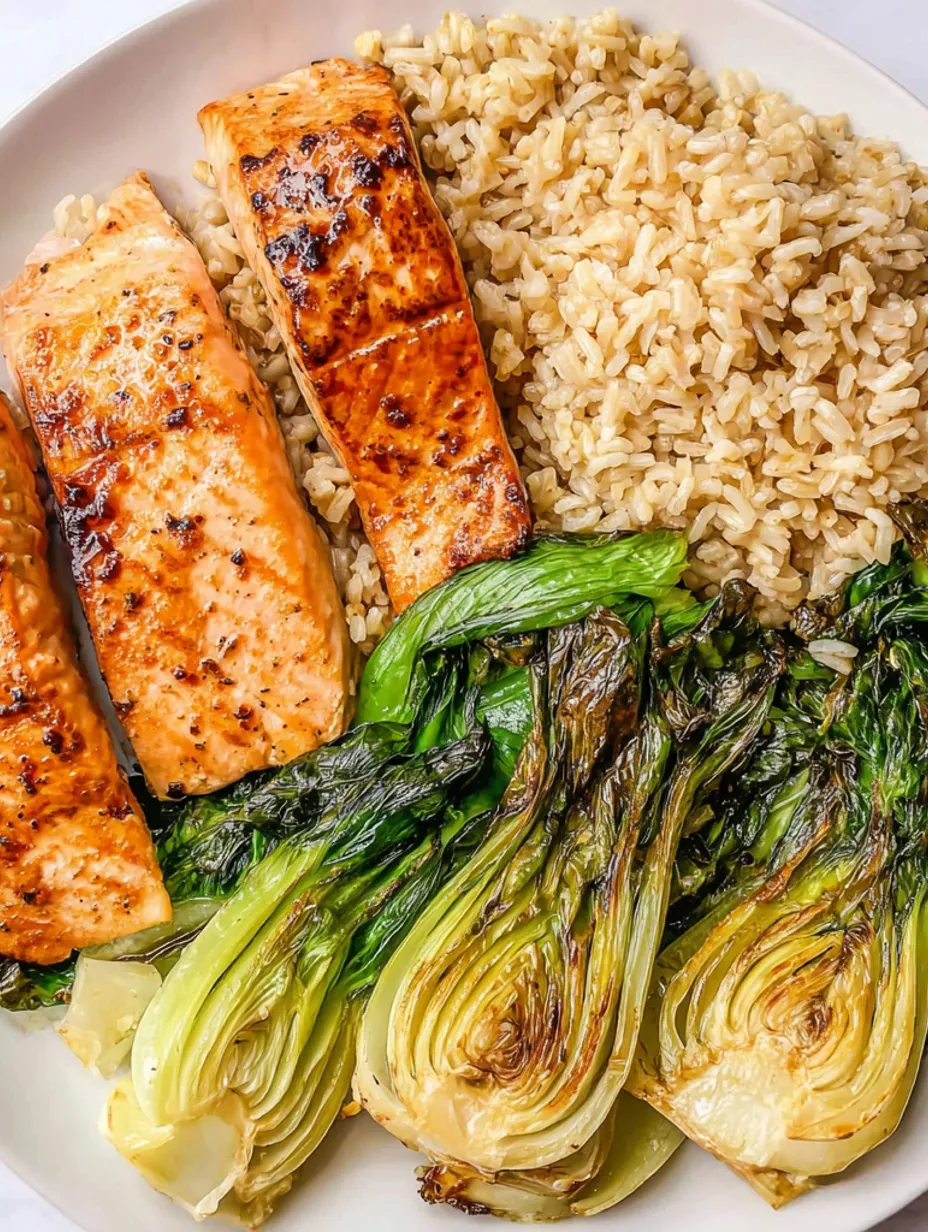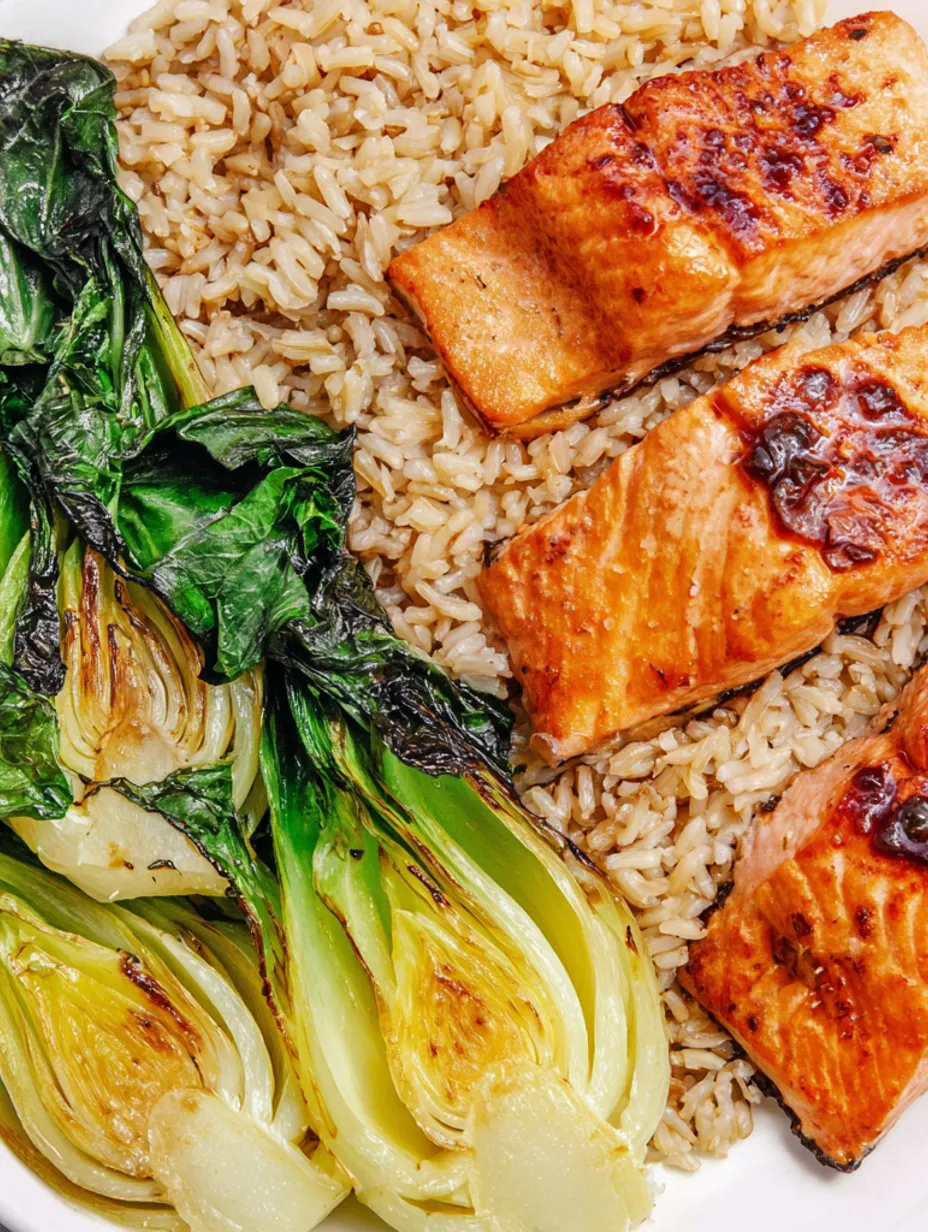 Bookmark
Bookmark
This savory sheet-pan dinner brings together tender roasted salmon and crisp-tender bok choy glazed in miso with just five main ingredients. It is the kind of easy dinner I turn to when I need something wholesome and fast without compromising flavor or satisfaction.
I first made this after a long day when I needed dinner on the table fast. It was such a hit with my family that it immediately earned a spot in our weekly rotation.
Ingredients
- Neutral oil: such as canola or avocado oil delivers a high smoke point ideal for roasting
- White miso paste: adds rich umami flavor and depth to the glaze
- Reduced-sodium soy sauce: enhances the savoriness while keeping the sodium in check
- Fresh salmon fillets: should be firm with bright color and a clean scent
- Kosher salt: brings balance and enhances natural flavors
- Baby bok choy: offers crunch and sweetness with excellent roasting texture
- Cooked brown rice: provides a hearty and fiber-rich base that soaks up every bit of sauce
Step-by-Step Instructions
- Preheat and Prep the Pan:
- Line a large rimmed baking sheet with foil and place it on the center oven rack. Preheat the oven to 425 degrees Fahrenheit so the pan heats up fully before the ingredients go on
- Make the Miso Glaze:
- In a small bowl whisk together one tablespoon of oil with white miso and soy sauce until it forms a smooth and thick glaze
- Arrange and Glaze the Salmon:
- Place the salmon fillets skin side down in the center of the hot baking sheet. Brush each fillet with half of the miso glaze making sure to coat the tops thoroughly
- Prepare the Bok Choy:
- Toss the halved baby bok choy in a large bowl with the remaining tablespoon of oil and kosher salt until evenly coated then arrange them cut side down around the salmon
- Start Roasting:
- Place the sheet pan in the oven and roast for 8 to 10 minutes until the bok choy stems begin to soften and caramelize slightly on the edges
- Finish with More Glaze:
- Carefully flip the bok choy halves and brush them with the remaining miso glaze. Return the sheet pan to the oven and cook for another 5 minutes or until the salmon flakes easily with a fork and the bok choy leaves are slightly crisped
- Plate and Serve:
- Spoon brown rice onto each plate and top with a salmon fillet and a portion of the bok choy. Serve immediately while hot
 Bookmark
Bookmark
You Must Know
I have always loved how baby bok choy becomes sweet and nutty once roasted. My daughter actually started enjoying green veggies after trying this one
Storage Tips
Store leftovers in an airtight container in the refrigerator for up to three days. Reheat in the oven or microwave until warmed through and serve with a splash of soy sauce if desired
Ingredient Substitutions
If miso is unavailable try tahini mixed with a splash of lemon and soy sauce for a similar savory coating. You can use broccoli or green beans instead of bok choy depending on what is in season
Serving Suggestions
 Bookmark
Bookmark
This dish pairs well with a side of pickled vegetables or a citrusy cucumber salad. For a heartier option add a soft-boiled egg or drizzle with sesame oil before serving
Cultural or Historical Context
Miso paste is a traditional Japanese ingredient made by fermenting soybeans and rice. Its deep savory profile brings complexity to this otherwise simple dish and reflects the minimalism in Japanese home cooking
Frequently Asked Questions About Recipes
- → Can I use another type of fish?
Yes, you can substitute the salmon with trout, cod, or halibut, but adjust the cooking time based on thickness.
- → What can I use instead of bok choy?
Baby spinach, broccoli, or asparagus make great alternatives while still complementing the miso glaze.
- → Is white miso necessary?
White miso offers a mild sweetness, but you can use yellow miso for a deeper flavor or red miso for a stronger taste.
- → Can I prepare this ahead of time?
You can whisk the glaze and prep the vegetables in advance, but roast the fish just before serving for best texture.
- → How do I prevent overcooking the salmon?
Keep an eye on the salmon in the last few minutes of cooking and remove it once it flakes easily with a fork.
- → Can I serve this without rice?
Yes, it pairs well with quinoa, noodles, or even cauliflower rice for a lighter option.
